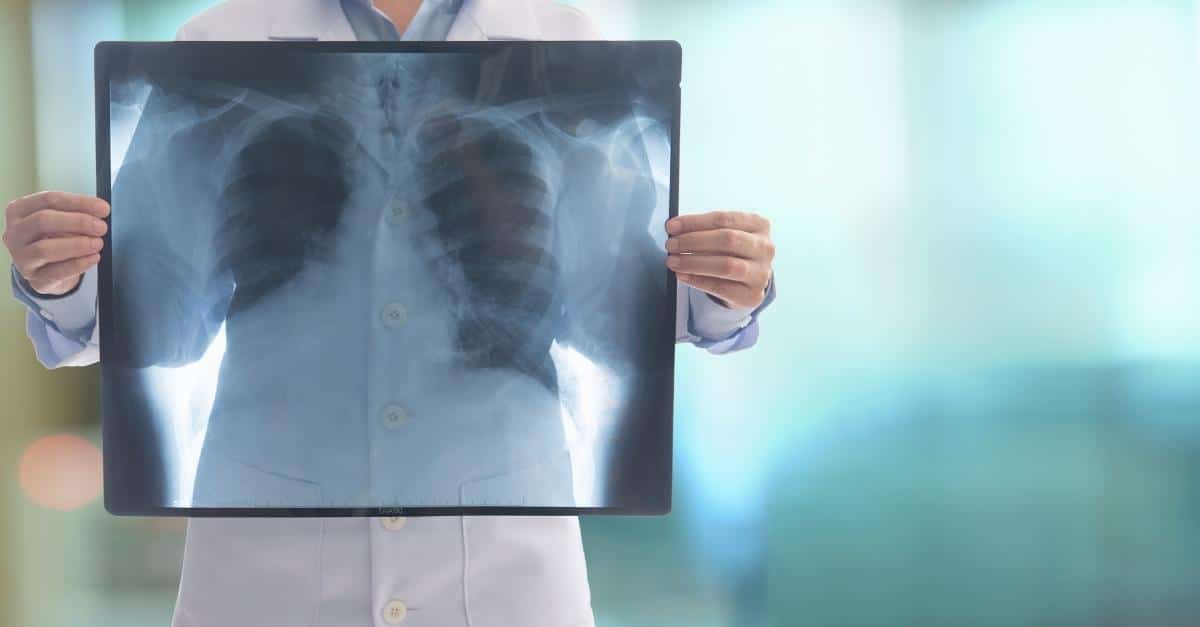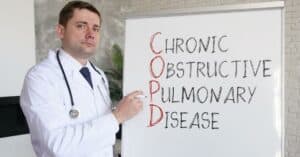People living with emphysema often cope with difficult emphysema symptoms.
These symptoms include shortness of breath, fatigue, and coughing. Emphysema and chronic bronchitis fall under the larger disease category of chronic obstructive pulmonary disease (COPD).
Emphysema, chronic bronchitis, and COPD affect people differently. For some people, emphysema progresses quickly, and for others, it progresses slowly.
Because emphysema affects people differently, it is often hard for people to know their exact emphysema prognosis.
Here is the information you need to know about emphysema prognosis and treatment options.
What is Emphysema?
Emphysema damages the lungs’ tiny air sacs (alveoli). The alveoli bring oxygen to the bloodstream.
However, in emphysema, holes form in the inner walls of the alveoli. As emphysema progresses, the airways leading to the alveoli lose their elasticity. Eventually, the weakened air sacs collapse and trap oxygen in the lungs.
COPD, which includes emphysema and chronic bronchitis, makes it difficult for people to exhale old air fully. When people with emphysema take a breath, the old air cannot get out completely, so new air cannot get inside.
People with emphysema struggle to breathe and often have trouble receiving enough oxygen.
Your emphysema prognosis depends on how advanced your emphysema is and the severity of your emphysema symptoms.
Emphysema Causes
In fact, emphysema can result from a variety of causes. The most common causes include:
- Genetics
- Cigarette Smoking
- Alpha-1 Antitrypsin Deficiency
- Long-term Exposure to Environmental Air Pollutants
Emphysema Prognosis
Currently, there is no cure for emphysema, chronic bronchitis, COPD or other chronic lung diseases. To diagnose and better understand the severity of your emphysema, your doctor may take a detailed medical history, run tests and recommend certain procedures.
For example, many doctors perform pulmonary function tests (PFTs) to help them diagnose the condition, understand the severity, and what treatments could work best. PFTs measure how well your lungs and current treatment plan are working.
Your doctor may also perform a 6-minute walk test to assess your exercise tolerance. In addition, chest x-rays, blood tests, and CT scans may be needed. After performing tests, your doctor may place your emphysema into stages.
The emphysema stages help you, and your doctor better understands the severity of your symptoms and your emphysema prognosis.
Emphysema Stages
The Global Initiative for Chronic Obstructive Lung Disease (GOLD) created the GOLD System to place certain chronic lung diseases into stages.
The GOLD System uses the forced expiratory volume in one second (FEV1) measurement from a PFT to categorize emphysema and COPD. In the GOLD System, the emphysema stages are as follows:
- Very mild or Stage 1: Very mild emphysema with a FEV1 about 80 percent or more of normal.
- Moderate or Stage 2: Moderate emphysema with a FEV1 between 50 and 80 percent of normal.
- Severe or Stage 3: Severe emphysema with FEV1 between 30 and 50 percent of normal.
- Very severe or Stage 4: Very severe emphysema with a lower FEV1 than Stage 3, or those with Stage 3 FEV1 and low blood oxygen levels.
While these stages are helpful, nobody can accurately predict emphysema prognosis or emphysema life expectancy.
However, doctors can use tests and procedures to estimate emphysema prognosis and life expectancy.
Hearing that there isn’t a cure may sound like a bleak emphysema prognosis, but there are treatment options available to manage emphysema symptoms.
Emphysema Treatment Options
Emphysema treatment options work to manage symptoms so that people can breathe better.
Traditional treatments include bronchodilator inhalers, corticosteroids, combination inhalers, antibiotics, and oxygen therapy.
Bronchodilators help open the airways and relax the muscles around the airways. Corticosteroids help reduce inflammation.
Combination inhalers typically combine bronchodilators and inhaled corticosteroids into the same inhaler.
For an infection, antibiotics may be prescribed. Often, people with emphysema have trouble getting enough oxygen and experience low blood oxygen levels. Sometimes, oxygen therapy is used to help people maintain a better blood oxygen level.
Emphysema causes many people to feel short of breath, especially during activity. It’s normal to avoid doing activities that make you feel breathless.
However, it’s been shown that even gentle exercises like walking strengthen muscles and improve stamina. Ask your doctor about what amount and type of exercise is best for you.
Diet can affect emphysema as well. Avoid foods that cause excess gas and bloating, such as fried foods, broccoli, cabbage and carbonated beverages.
Try baked foods, steamed vegetables, fruit smoothies, and water instead. Check out these COPD-friendly foods for more ideas, and remember to talk with your doctor before changing your diet.

Christine Kingsley, APRN is the Health and Wellness Director at the Lung Institute where she focuses on providing helpful online resources for people looking for information on various lung diseases, breathing exercises, and healthy lifestyle choices. She advocates for holistic care that involves working with your doctor to explore all options including traditional and alternative care while focusing on diet and exercise as proactive measures.









